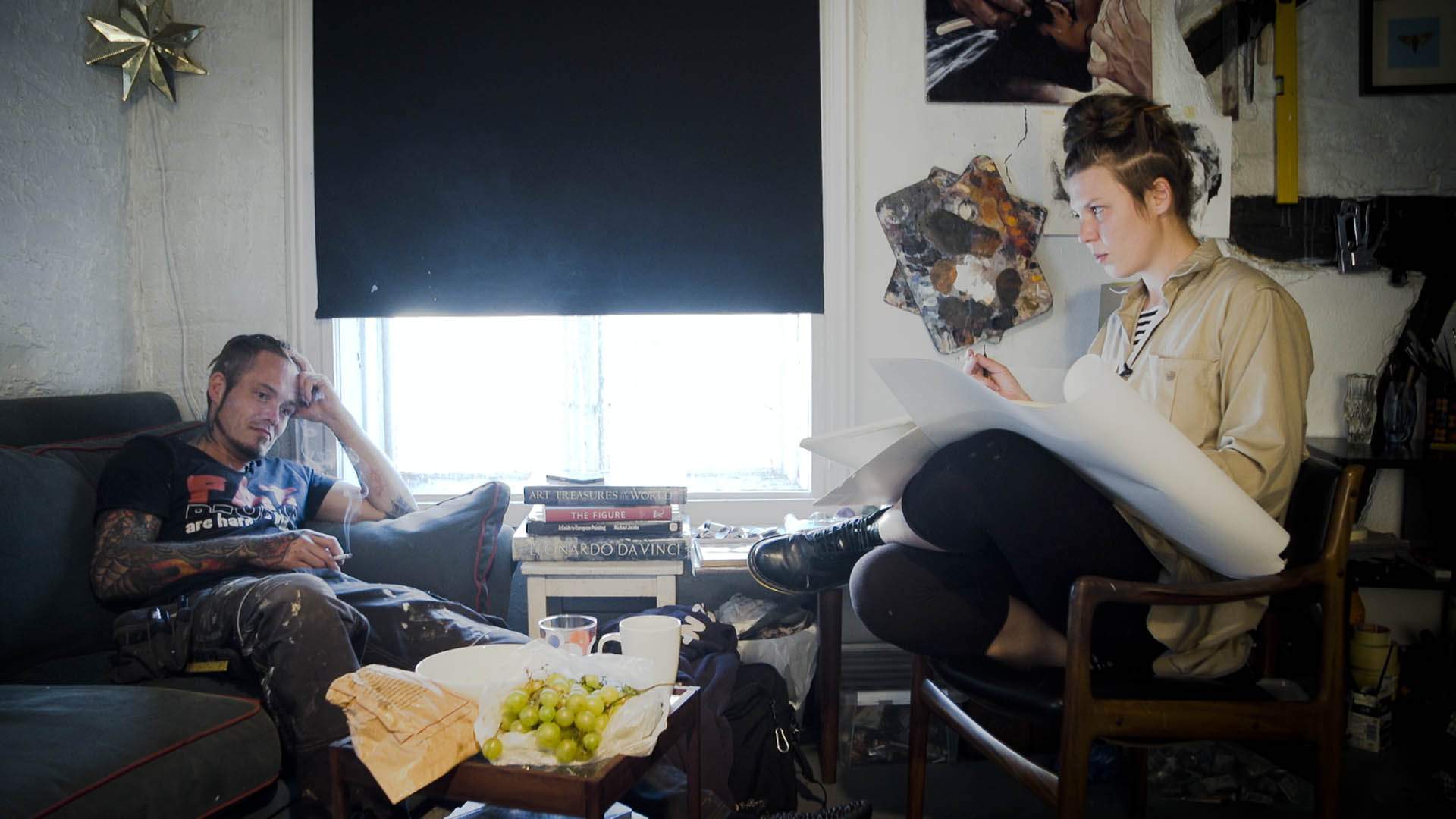The Painter and the Thief
This fascinating, thoughtful and moving documentary tells an astonishing true tale about an artist confronting the man who stole two of her paintings.
Overview
Asked why he broke into Oslo's Gallery Nobel in 2015 and stole two large oil paintings in broad daylight, Karl-Bertil Nordland gives perhaps the most honest answer anyone could: "because they were beautiful". He isn't responding to the police or providing an excuse during his court appearance, but speaking to Czech artist Barbora Kysilkova, who wanted answers about the theft of her work. Captured on camera, the pilfering of Kysilkova's Swan Song and Chloe & Emma initially appeared to be a professional job. As the two pieces were removed from their frames in such an exacting manner, it was presumed that experts were behind the crime. But Nordland and his accomplice didn't plan their brazen heist, or have a background in purloining art. Thanks to the effect of illicit substances, Nordland can't even remember much about it, let alone recall what happened to the stolen works that Kysilkova desperately wants back.
That said, as the thief tells the painter when she first talks with him, he does know that he walked past Gallery Nobel often. He's aware that he saw her photorealistic pieces — the first of a dead swan lying in reeds, the second of two girls sat side by side on a couch — many times, too. And, he's candid about the fact that he marvelled at and was moved by the two canvases long before he absconded with them. As a result, he doesn't seem surprised that his life led him to that juncture, and to snatching Kysilkova's creations.
A victim confronts a perpetrator: that's The Painter and the Thief's five-word summary, and it's 100-percent accurate. But such a brief description can't convey how fascinating, thoughtful, moving and astonishing this documentary is as it unfurls a tale so layered and wild that it can only be true — a story that stretches far beyond what anyone could feasibly anticipate of such an altercation and its aftermath, in fact. Nordland was arrested and charged for his crime, with Kysilkova initially making contact with him at his trial. From there, the skilled carpenter and heavily tattooed addict unexpectedly gained a friend in the woman whose works he took. Kysilkova first asked to paint Nordland as part of her attempts to understand him, and he then became her muse. As all relationships do, especially ones forged under such unusual circumstances, their connection evolved, adapted and changed from there. As Norwegian filmmaker Benjamin Ree (Magnus) pointed a camera in their direction for three years, the duo weathered their own ups, downs, twists and turns, as did their friendship.
If Nordland's reply to Kysilkova feels disarmingly frank and unguarded, that's because it is. The same tone remains throughout The Painter and the Thief's entire duration. Absent the usual tropes and stylistic markers that true-crime documentaries are known for, the film eschews the standard mix of talking heads, re-enactments and explanatory narration in favour of truly observing and stepping inside its subjects' unique bond. Demonstrating an abundance of empathy that's as haunting as Kysilkova's striking pieces, Ree also gravitates to moments as equally sincere and direct as Nordland's initial admission. To see the latter's response to Kysilkova's first painting of him — physically cycling through shock, amazement, wonder and gratitude, and starting with his eyes wide in bewilderment before being overwhelmed with emotion to the point of sobbing — is to witness the most intimate and complicated of reactions. It's to no one's surprise that Ree lets his movie linger here, and lets his viewers soak in the full breadth and depth of Nordland's reckoning with who he is, how he has long felt about himself, what it means to him to be immortalised in an object of beauty and how it feels to be truly be seen by someone else.
When it comes to its titular figures, The Painter and the Thief's focus doesn't just flow in one direction. Kysilkova helps piece together Nordland's story, including voicing a montage of photos and clips that takes a snapshot of his life from his childhood onwards; however, she's just as much of a subject of Ree's film as he is. Indeed, when it's time to expand upon her own tale, Nordland returns the favour by recounting what he knows about his friend in the same fashion. Both have experienced tumultuous histories. Neither's path from their first meeting is straightforward, either. Nordland is involved in an accident that leaves him hospitalised. Kysilkova struggles with her finances, and with her partner Øystein's worries about her new connection. Flitting back and forth between the two — but always leaving an extra impression whenever they're together — The Painter and the Thief offers a level of detail that also matches Kysilkova's paintings, all while charting the intersection of two unlikely kindred spirits.
When this affecting and sensitive documentary premiered at the Sundance Film Festival in early 2020, it won a special jury award for creative storytelling — and the intuitive way in which Ree weaves together Kysilkova and Nordland's stories is worthy of the recognition. The gentle tone, the willingness to let things unravel as they will, the care and attention shown in all directions, the utter lack of sensationalism: they're all instrumental in shaping an extraordinary film. So too is the blend of raw yet gorgeously observed imagery by Ree and fellow cinematographer Kristoffer Kumar (Arctic Superstar), the delicate and patient editing by Robert Stengård (Rebels), and the engaging score from Uno Helmersson (Bobbi Jene). An intricate and unflinching insight into kindness and compassion in even the strangest of circumstances needs all of the above, as does a considerate and ruminative exploration of trauma, redemption, addiction, art, power and friendship. The Painter and the Thief is exactly that film.





